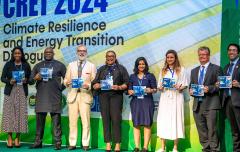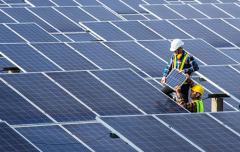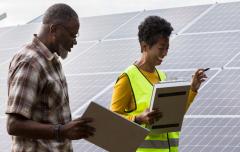New study supports Cooling for All findings by identifying major gaps in access to essential cooling
Between 1.8 and 4.1 billion people in the Global South are at risk of heat-related health problems because of a lack of access to indoor cooling, with a median target of 3.7 billion people affected, according to a new study by the International Institute of Applied Systems Analysis (IIASA) and the Yale University School of Forestry and Environmental Studies.
Highlights
The study supports many of the findings in the Chilling Prospects: Providing Sustainable Cooling for All report, which was released by Sustainable Energy for All (SEforALL) in July 2018.
Rising global temperatures are resulting in a significant number of heat-related deaths annually, particularly among the elderly, the poor and those living in densely populated cities. The lack of essential cooling is a major equity issue that increasingly demands attention from policy makers since it reflects energy poverty and the state of human well-being.
The IIASA/Yale study is one of the first to examine how the combination of adverse climate conditions and poverty affects cooling demand. The estimated number of people exposed to heat-related health problems varies and depends on such factors as the required indoor temperature for thermal comfort and number of tolerable days of heat exposure.
The researchers applied a variable degree days (VDD) method on a global grid to highlight the location of populations exposed to potential heat stress and estimated the energy demand required to meet residential cooling needs, accounting for climate conditions, housing types, access to electricity, and AC ownership.
The results reveal large gaps in access to essential cooling. Large gaps exist in India and parts of Pakistan and Bangladesh. Other significant gaps are in Southeast Asia, notably in Indonesia, as well as in China, sub-Saharan Africa and the Nile valley. The study estimated that closing this cooling gap with conventional cooling technologies would increase global residential electricity consumption by an average of 14% from current levels, primarily due to a rise in air conditioning use. This would result in higher energy costs and significant environmental impact.
The projected demand for cooling is an unrecognized energy poverty gap that is much larger than that indicated by the electricity access indicator of the Sustainable Development Goal 7 (SDG7).
Air conditioning (AC) is expected to increase significantly with rising incomes, but it is likely that many who need AC will not be able to get it due to its high cost. Only 8% of the 2.8 billion people living in the world’s hottest regions currently have an air conditioning unit, making it a luxury item. That under 1 billion people lack access to electricity and at least 1 billion live in slum conditions shows that this challenge is not just about providing affordable cooling, but also about improving living conditions.
Addressing the cooling energy poverty gap requires integrated strategies. Solutions beyond improved AC efficiency would involve passive building and city design, innovative cooling technologies, and parsimonious use of AC to ensure essential cooling for all can be achieved with minimal environmental damage. There is also a need to consider behavioral aspects and promote moderate set points of indoor temperatures.
There is a need to increase access to affordable, efficient and low greenhouse gas emitting air conditioning as mandated under the Kigali amendment. Passive building design involves using building methods and materials that improve the energy efficiency of buildings and narrow their ecological footprint, reducing the amount of energy needed for space heating or cooling. Better design of residential areas would reduce heat island effects in urban areas.
Meeting the essential cooling gap is related to achieving several of the SDGs, including universal access to electricity under SDG7, adequate and affordable housing under SDG11 and other SDGs involving poverty reduction, good health and well-being, and sustainable cities and communities.
The study’s conclusion chimed with those of SEforALL’s Chilling Prospects report, which estimated that 3.4 billion people were at risk of health problems resulting from rising global temperatures. That report also identified parts of sub-Saharan Africa and several Asian countries, including India, Pakistan, Bangladesh, Indonesia and China, as the countries with the largest cooling access gaps.
Chilling Prospects recommended a holistic approach to addressing the cooling challenge and urged the adoption of alternative cooling methods to air conditioning to limit energy consumption and prevent environmental damage.
Together, the IIASA/Yale study and Chilling Prospects illuminate the social and economic risks of ignoring the sustainable cooling challenge, one that will require concerted effort across business, government and civil-society.
Learn more about how the Cooling for All Secretariat is working to coordinate progress between these groups.
Related content

Press release
04 Nov 2024

Data analysis
16 Oct 2024

Research
14 Aug 2024

News
15 Jul 2024
